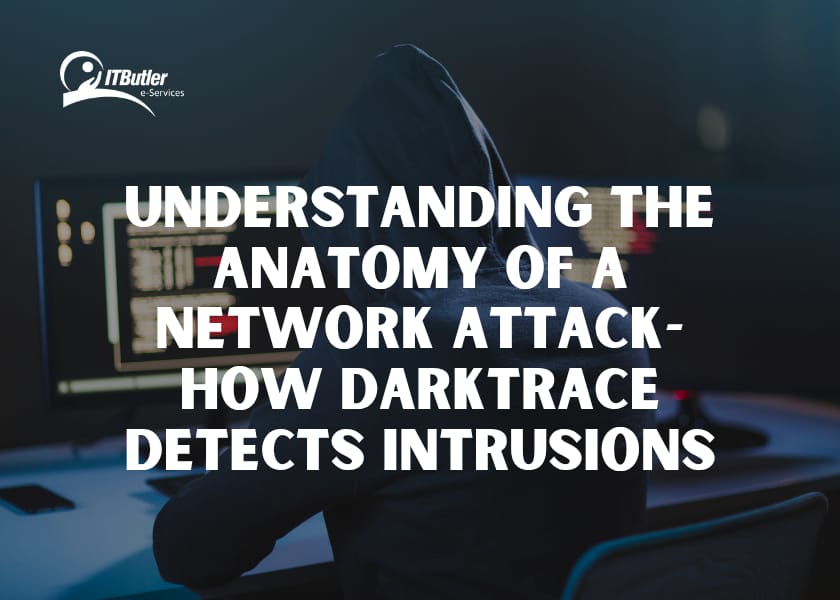Cyberattacks look and feel like coordinated effective random events that happen in a certain area. But they are not. Have you ever thought about how they happen? However, to defend against network attacks, understanding the attack’s structure and function is mandatory. As the present world is more inclined to digital dangers, many threats have evolved in the contemporary world with businesses. So for your organization’s safety, you require tools. They are not only responsive to the breaches but they can identify and mitigate them. Darktrace, an organization using artificial intelligence in its operations, has become rather helpful for identifying network attack anatomy.
This blog post will cover the steps of a network attack, how Darktrace intrusion detection works, and how you can combat cyber threats with advanced threat detection systems.
What is the Network Attack Anatomy?
A network attack does not happen one and for all, instead is a series of processes. It is a sequence of actions hackers take to break into a network, and gain full access to it. Now, it will be useful to investigate these stages in more detail.
1. Reconnaissance
The first step in any attack is reconnaissance. Hackers case-build information relating to the target that they can take advantage of.
How They Do It?
- Open search and checking of vulnerabilities in the network.
- However, this can for instance include information in the public domain. Such as personal details of employees.
- The second one is the geographical location of the network, by getting the physical layout of the organization. It is done with tools tools such as Wireshark and Nmap.
Darktrace’s Role
Darktrace here uses behavioral analytics to look for any anomalies during this stage. For instance, if an external entity is probing for services on different ports. Then it is alarming, and Darktrace will identify this as such.
2. Exploitation
Once weaknesses are realized, an attacker uses them to penetrate a system or network. However, this could range from sending phishing emails to hacking into other accounts and installing malware. Furthermore, it can be any other exploitation of vulnerabilities left by firms failing to update their software.
Example
Suppose there is an intention by an attacker to forward a phishing email to the employee of the organization. This is because when the employee merely and without knowing clicks on the link, that’s it. The attacker has gained access to the network.
Darktrace Intrusion Detection
Darktrace uses AI to detect anomalies in real time. If a user starts downloading odd files or goes through the critical part of a network, then Darktrace triggers an alert.
3. Privilege Escalation
Intruders also launch privilege escalation tactics after gaining admittance to a computer system to get hold of the precise systems.
Techniques Used
- Exploiting admin credentials.
- A query asking an employee to retrieve databases or specific files.
Darktrace’s Advantage
In using progressive threat sensing techniques, Darktrace can recognize access privilege increase tries. It employs machine learning to detect anything unusual in the users’ activity patterns.
4. Lateral Movement
Once attackers gain control, they then move from one computer to another in the network gaining more control once infected.
What This Looks Like
- Exploiting further systems with infected machines
- Searching for valuable data, such as financial records or intellectual property
How Darktrace Identifies Lateral Movement
In terms of traffic monitoring, Darktrace handled the east-west traffic (internal network traffic). Therefore, its self-learning AI can identify abnormally connected devices. Thus stopping the attackers from propagating.
5. Data Exfiltration
Finally, the attackers either exfiltrate sensitive information or introduce ransomware into the organization.
Methods Used
- File encryption, and then eventually get paid for unlocking the files.
- Uploading of several megabytes of data to servers located outside the local organization or country.
Darktrace’s Response
Darktrace identifies unfamiliar behaviors in terms of outgoing connectivity. For example, if a device is suddenly downloading excessively large files to an unknown server, this is a cause for concern.
How Darktrace Detects Intrusions
Darktrace thus claims that their approach to intrusion detection relies on self-learning artificial intelligence. However, different from traditional tools, Darktrace operates autonomously and learns from its context within your network. So here’s how it works:
1. Establishing a Baseline
Darktrace starts by identifying what should be considered abnormal in your network. This includes:
- Typical user behavior.
- Regular data flows.
- Normal device interactions.
2. Anomaly Detection
After establishing the baseline, Darktrace’s solution actively floats in the network. However, any variation involving the logon time, or access to additional files, for example, is noted.
3. Autonomous Response
If a threat is identified then there is no need to wait for the intervention of human beings. Its Autonomous Response Technology self-quarantines, thus eliminating the attack.
Strategies for Network Attack Anatomy by Darktrace
1. Behavioral Analysis
Darktrace uses behavior analysis of users and devices to look for signs of such activity. For instance:
- A user using files for the first time probably rarely, if ever, touches some or most of the files.
- A device rapidly connecting with an unrecognized IP asset.
2. AI-Powered Threat Detection
Darktrace uses machine learning to detect sophisticated threats, such as:
- Zero-day attacks: However, threats arise from existing unknown weaknesses.
- Advanced Persistent Threats (APTs): Sustained attempts to inflict damage that might go unnoticed or be unnoticed for many months, if not years.
3. Visualization Tools
However, this gives the security teams at Darktrace a perfect layout of all threats in simple visual formats. Thus, making it easier for analysts to understand and counter the attacks.
How to Use Darktrace in Your Security Plan
Step 1: Check What Your Firm is Currently up Against
Find areas where you are vulnerable at the current moment.
Step 2: Deploy Darktrace
Darktrace should be incorporated into your network to provide instantaneous detection.
Step 3: Train Your Team
Make sure that your security staff knows how Darktrace is used to protect the company.
Step 4: Conduct Routine Threat Hunts
Daily and weekly look at the information by Darktrace for detection of threats and their subsequent overcoming.
Conclusion
Knowledge of the parts of network attack anatomy is a fundamental foundation that organizations must possess before they can have an effective cybersecurity plan in place. However, with Darktrace’s self-learning AI and intelligent threat identification, you can protect your business against attacks before they occur.
As cyber threats are emerging daily, it is impossible to imagine today’s businesses without products like Darktrace. So don’t let bad guys be the ones deciding your network security or architecture, cast your organization as the decision-maker today.
Do you want to feel confident while defending your network? Start your journey with Darktrace to understand network attack anatomy.






